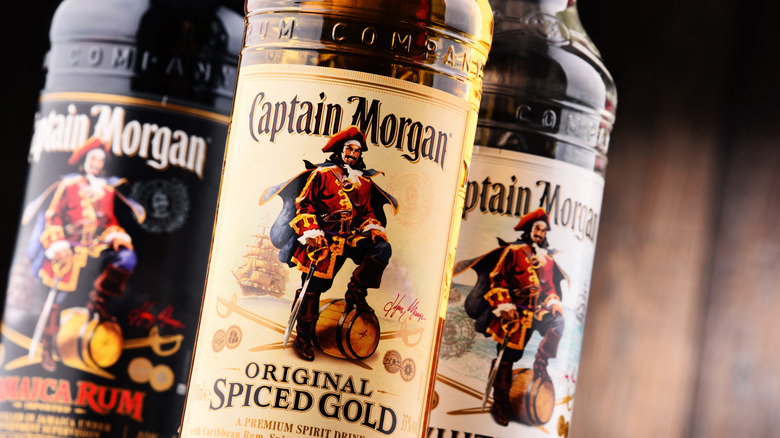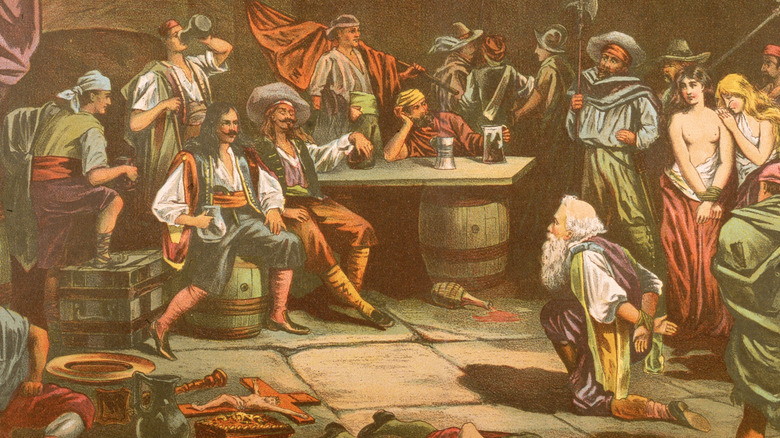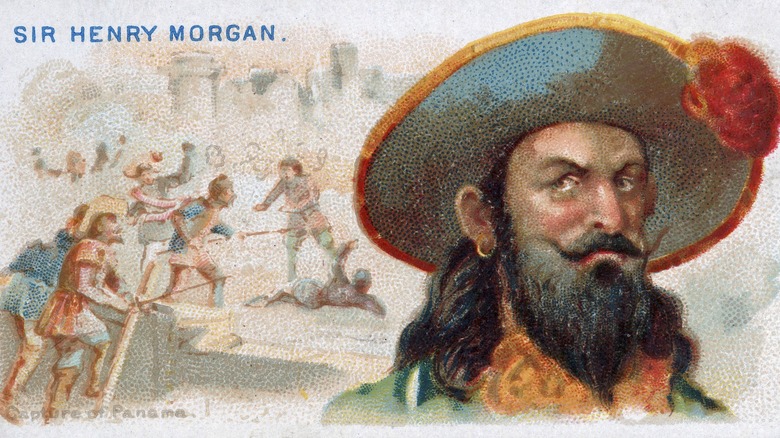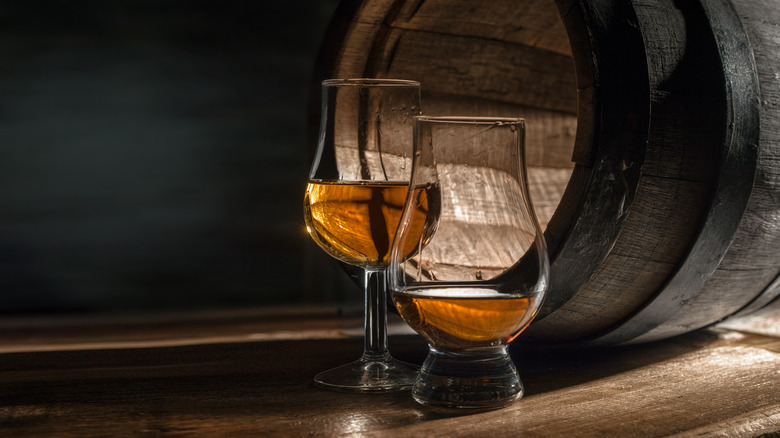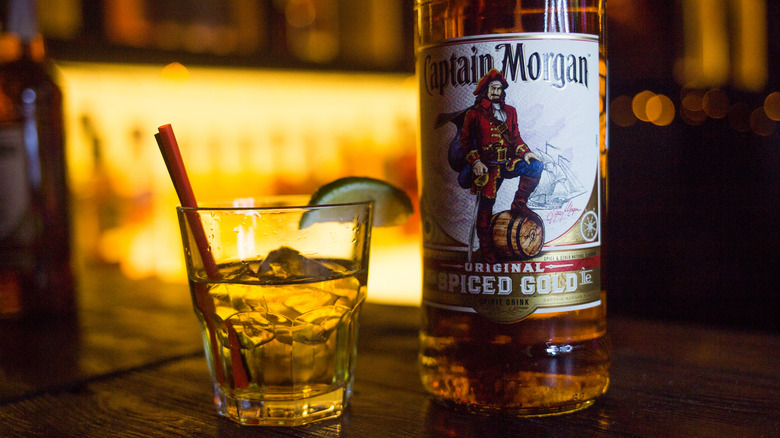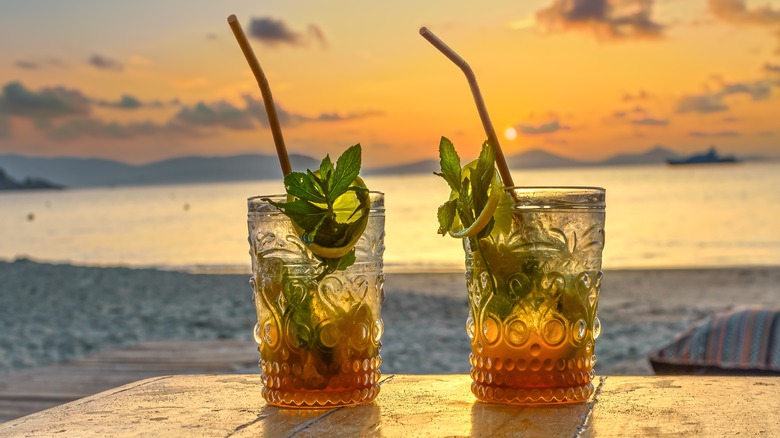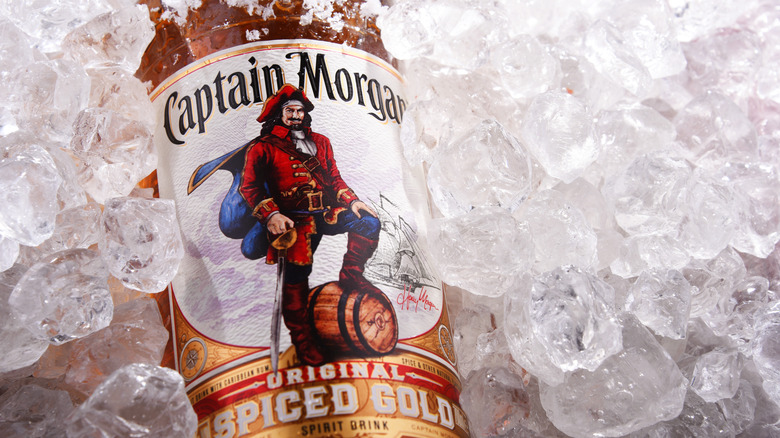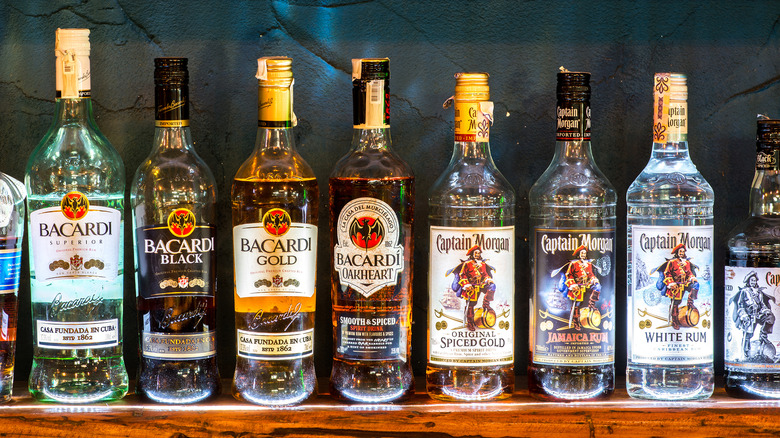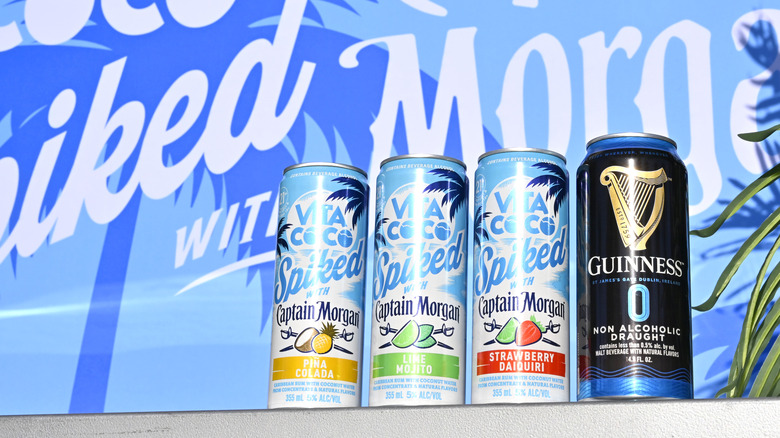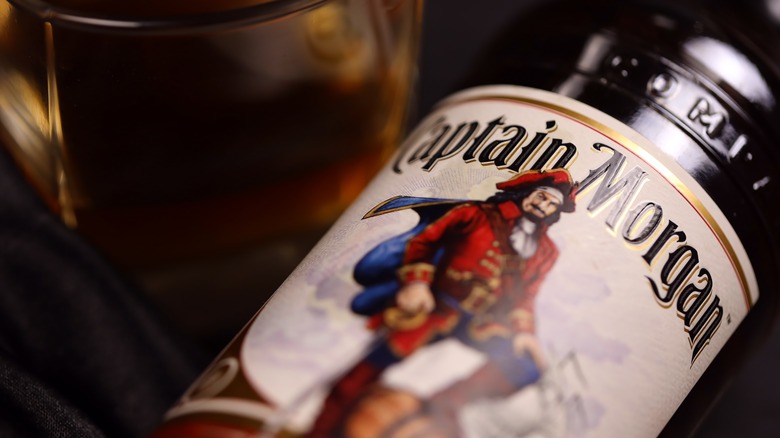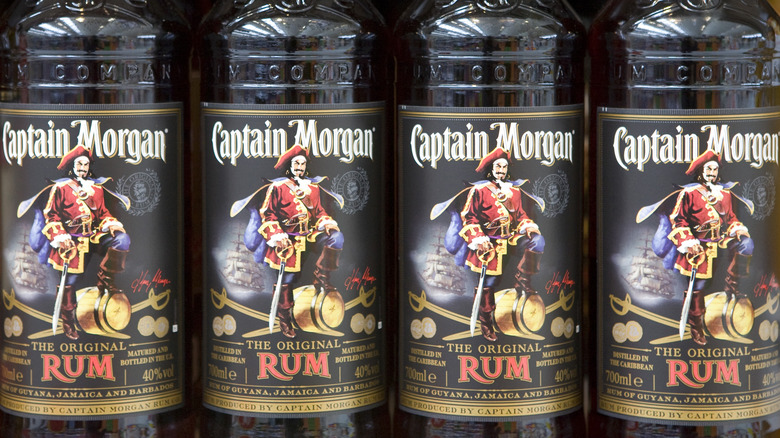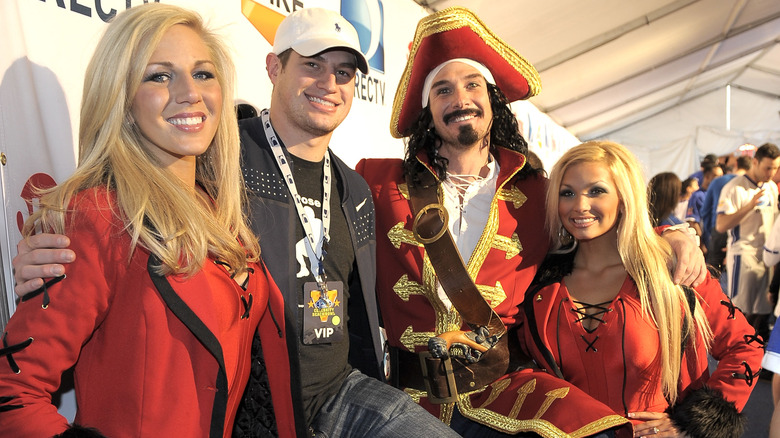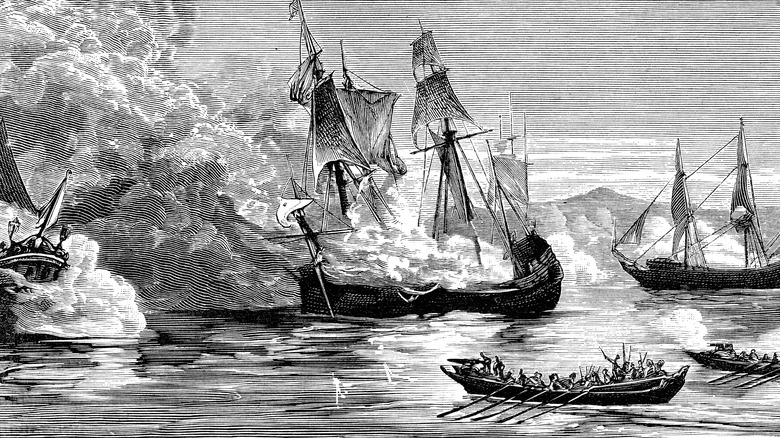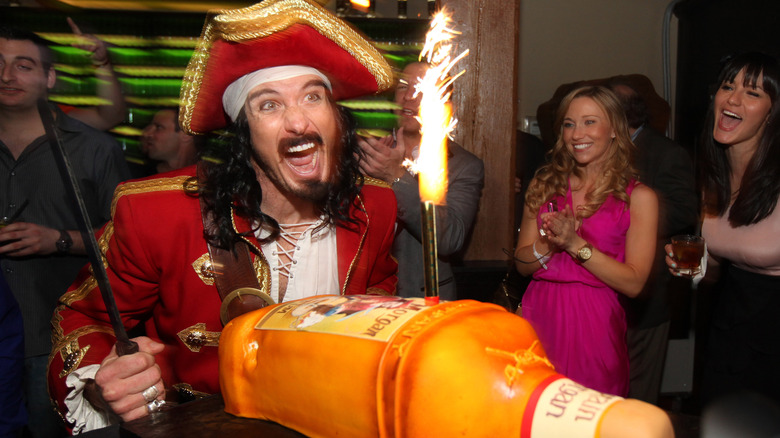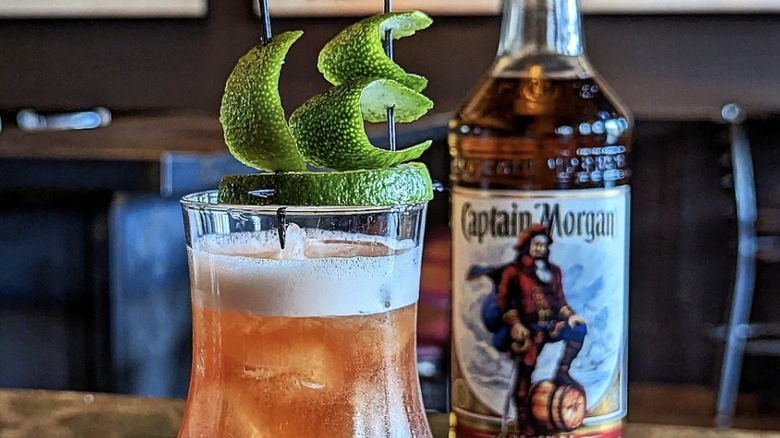Captain Morgan Original Spiced Rum: The Ultimate Bottle Guide
If you've ever had this spiced rum, the name probably conjures up a very specific image: a swashbuckling pirate-esque figure with a three-pointed hat, a powerful mustache, and a blue cape that buffets out in the wind. Perhaps you even think of his famous stance, with his left foot poised on a sideways barrel and his knee raised, as if he's about to leap onto an enemy ship and stake his claim to their bounty.
Yet the iconic label on this bottle also posits some questions. Who is this mysterious captain, and how did his name and image come to be associated with the spiced rum brand? What's the connection between pirates and spiced rum? And how can you use the Captain — considered by many the king of rums — to create a great cocktail? Luckily, we are here to answer all these questions and more in the ultimate bottle guide to Captain Morgan Original Spiced Rum.
Who was Captain Morgan?
Captain Morgan, otherwise known as Sir Henry Morgan, was a Welshman from Monmouth County who lived from 1635 to 1688. During the 1660s and '70s, he had a bit of a reputation: Morgan was renowned across the Caribbean for being the enemy of the Spanish because he was the very best of the English privateers. Privateering is like being a legal pirate; with a license issued by the English government, Captain Morgan was essentially a mercenary with free rein to attack any Spaniards he ran across on the seas.
Sent to the Caribbean, Morgan's mission was to protect Jamaica, which at that point was a fledgling British colony. In doing so, he led extremely successful attacks on Portobello, Maracaibo, and Panama, which have been heavily documented in writing and dramatic paintings. He also became the leader of the Brethren of the Coast, a ragtag coalition of people sailing the high seas that included both pirates and privateers. His long career plaguing the open seas ended happily for him, if not for the Spanish: he was knighted in England by King Charles II and then retired to Jamaica, where he lived out the rest of his life on land.
Why is this rum named after Captain Morgan?
When Captain Morgan retired, legend has it that he spent the rest of his days tooling around and drinking Jamaican rum, right up until his death in 1688. It might come as a shock, but with all his adventures on the high seas, he didn't have the time to create a rum brand himself — when it came to rum, he was more of an enthusiast than a pioneer.
Three centuries passed and, in that time, Captain Morgan became an iconic historical figure, maybe because he just seemed, well, cool. That's why in 1944 when the actual Captain Morgan brand was founded by whiskey purveyor Seagram, its founders named it after the swashbuckling privateer. Seagram operated the brand up until 2001 when the Captain Morgan company was acquired by the British alcohol conglomerate Diageo.
Today, the brand has transformed Captain Morgan into a cartoon of sorts; the Captain is known to make appearances in an anthropomorphized form at parties and sports events. Still, the newer iterations of this character aim to retain that same sense of crafty cheekiness that the original Captain is said to have possessed.
How is Captain Morgan Spiced Rum made?
Rum's primary ingredient is sugarcane, which is only grown and harvested in tropical climates — that's why rum is associated with more tropical drinks. To make Captain Morgan rum, the first step is turning your sugarcane juice into molasses. That molasses needs to be fermented with yeast and water, and then distilled, a process that involves boiling out the water to create an alcohol that is very concentrated. Traditionally, rum is either distilled in copper pots or column stills. After that, Captain Morgan's rum is aged in oak barrels, which infuse the rum with more flavor, and turn the alcohol into its characteristic golden color. This recipe ends up coming out to around 35% ABV after the elaborate distillation and aging process.
Unfortunately for any fans of heat out there, spiced rum isn't spicy, per se. Rather, it's made with baking spices, like cinnamon and nutmeg, in order to add subtle tasting notes. These extra flavors are added to the Captain Morgan Original Spiced Rum recipe via infusion — the ingredients are added to the rum as it ages, and then strained out, leaving a liquid that has various phantom flavors, without actually containing any physical cinnamon sticks.
How does Captain Morgan Original Spiced Rum taste?
Captain Morgan Original Spiced Rum tastes like the spices used in the infusion process. This spiced rum contains notes of Madagascar vanilla, cinnamon, clove, dried fruit, caramelized sugar, vanilla, and honey. This flavor combo makes it sweeter than other rums. In addition, because the alcohol is aged in oak barrels, the rum takes on some smoky, woody qualities, and has more depth of flavor.
The Captain Morgan taste that we all know and love recently underwent a big change. In 2023, parent company Diageo made the bold choice to modify the tried and true recipe: up until then, Captain Morgan was made with fake vanilla flavoring, but now, the rum includes real Madagascar vanilla extract, a slight flavor shift that necessitates a revamping of the entire brand. Vice President of Captain Morgan Anna Nosko announced to Rum Raiders that the addition of the vanilla constituted a new chapter for the company: "With a fresh new look that highlights our elevated liquid, we are staying true to our roots and spicing it up."
How to drink Captain Morgan
Captain Morgan isn't necessarily a sipping rum, because of its spice; rather, this rum is meant to enhance a cocktail. With that said, this rum has a very distinct, powerful flavor, which means you can't just mix it with anything. Because sugarcane and tropical fruit are grown in the same region, rums are often paired with tropical fruit flavors. That means you can't go wrong when it comes to cutting this spiced rum with basic tropical mixers like pineapple juice, as long as you don't mind a sweet drink.
Other highball drinks you can easily whip up using Captain Morgan include a Captain and cola, or Captain iced tea. In general, you can substitute Captain for light rum in most cocktails if you want to add depth and sweetness to the recipe.
If you're in a fancier bartending mood, try making a Captain colada — this piña colada is made with rum, coconut water, lime juice, pineapple juice, and coconut cream, and served frozen. Other classed-up Captain classics include the Captain Morgan zombie (made with Captain Morgan rum, lime juice, grapefruit juice, passionfruit juice, and simple syrup) and the Captain coquito (a Puerto Rican drink made with Captain Morgan rum, evaporated and sweetened condensed milk, coconut cream, and various baking spices).
Is Captain Morgan expensive?
A 750-milliliter bottle of Captain Morgan Original Spiced Rum can cost anywhere between $12–15 at the time of publishing. The standard bottle comes out to around 25 ounces, which means you can get somewhere between 17 and 25 shots out of the bottle — depending on how large you like your shots, of course. For other Captain Morgan flavors, the price range is pretty similar; all the flavored Captains are identical in price to the original, while the light rum and dark rum are slightly more expensive. The most expensive bottle of Captain on the market is Private Stock, which is still very affordable, ranging from $24–26 at the time of publishing.
Captain Morgan rum is similar in price to its big-name competitors — you might end up paying slightly less for a bottle of Bacardi or Kraken, but the difference in dollar amount is negligible. That means that choosing the best rum for your specialty cocktails truly depends on your own taste. If spicy, vanilla-infused liquor is your thing, a bottle of Captain Morgan definitely will do the trick.
Captain Morgan Original Spiced Rum v. Bacardi Spiced
Don't get us wrong, Captain Morgan is popular; but when someone mentions rum, the brand you think of first is still probably Bacardi. That's because this company's light rum is very affordable, very versatile, and beloved by drinkers and business owners alike. Although Bacardi's light rum is usually the main attraction, this company also makes spiced rum, marketed as Bacardi Spiced — a product that's very similar to Captain Morgan's.
Between Bacardi Spiced and Captain Morgan Original Spiced Rum, there aren't a lot of differences. The distillation and aging processes are very similar: both products are aged in oak barrels, which gives them a smoky flavor and a gorgeous golden sheen. These rums also share several ingredients, including cinnamon and vanilla. However, the palate that these recipes aim for is not exactly the same: Bacardi Spiced features almonds and nutmeg, which makes the flavor nuttier and meatier. Captain Morgan avoids these ingredients and uses cloves instead, which makes the rum more aromatic.
Captain Morgan has many flavors
Captain Morgan Original Spiced Rum may be the most well-known of the Captain Morgan products, but it's certainly not the only drink this company has on the market. The company also makes white rum and has spiced versions of dark rum, silver rum, and a higher-ABV, 100-proof rum on the shelves. If you're looking for something more top-shelf, there's also a premium-level bottle called Captain Morgan Private Stock, sold in a fancier bottle at a fancier price point.
This company also makes flavored rum liqueurs that are lower in alcohol content. These offerings include Captain Morgan Cherry Vanilla, Captain Morgan Sliced Apple, and Captain Morgan Orange Vanilla Twist — products you can drink on their own as digestifs. The brand makes a few pre-mixed cocktails as well, like the Captain Morgan Long Island Iced Tea and the Captain Morgan Mai Tai. The Captain has a collaboration with the coconut water brand Vita Coco. Together, they produce three flavors of spiked coconut water, including Lime Mojito, Pina Colada, and Strawberry Daiquiri.
The Captain Morgan label is iconic
The image of Captain Morgan on the label of each and every bottle of Original Spiced Rum is a stylized rendering of the historical figure. That label is what sets this brand apart from other call brands on the shelves behind the bar. Most labels feature the name of the liquor prominently, and some have an illustration, but no other brand has an illustrated privateer standing tall and proud on the bottles.
That design, which has become iconic since Captain Morgan first began distribution, is by artist Dan Maitz. He invented the character that represents the Captain on commission for Joseph Seagram and redesigned it several times over the course of the next 20 years. A lot of Maitz's work is inspired by a love of sailing and a fascination with the Golden Age of Exploration when Sir Henry Morgan sailed. Maitz's oil paintings of maritime scenes during that time period have won much acclaim, and he is a signature member of the American Society of Marine Artists.
Doctors use the Captain Morgan hip dislocation trick
The image of the Captain painted by Maitz has become so ingrained in our culture that it has found its way into various other non-rum-related fields. One of these, funnily enough, is medicine where the "Captain Morgan technique" has become shorthand for a way to help patients with dislocated hips.
According to a 2011 study published in the Annals of Emergency Medicine, called "The Captain Morgan technique for the reduction of the dislocated hip," researchers looked at medical records from the Emergency Department and analyzed how doctors responded to patients with dislocated hips. In this study, researchers define the "Captain Morgan technique" as a strategy that involves "placing the physician's knee behind the supine patient's flexed knee and lifting with anterior force, with rotation as needed."
In other words, the doctor poses with their foot up on the hospital bed like Captain Morgan and uses the structure of their own body to rotate the patient's hip back into place. This study found that using the "Captain Morgan technique" was successful in 12 out of 13 cases. It may not be the most popular method of helping these patients, but the Captain Morgan technique is definitely still in rotation — sorry, we had to!
Captain Morgan tried guerrilla marketing
The Captain Morgan pose also holds sway in the world of sports. In 2010, the Captain Morgan brand caught heat from the NFL when the Eagles' tight end Brent Celek struck the classic Captain Morgan pose in midair while celebrating a successful touchdown against the Dallas Cowboys.
Huffington Post reports Celek had caught wind of a potential guerrilla marketing campaign by Captain Morgan — each time a player struck the classic Captain Morgan pose on camera during a primetime game, the company was planning to donate $10,000 to the Gridiron Greats Assistance Fund, a nonprofit designed to help out former football players after retiring. Unfortunately for Captain Morgan's sneaky marketing team, once the NFL caught wind of the scheme, they shut it down immediately by banning the pose.
NFL spokesperson Greg Aiello explained to Yahoo! Sports, "A company can't pay a player to somehow promote its product on the field," even if that money is destined for charity. The campaign may have died before it even started, but the negative press definitely reinforced Captain Morgan's reputation as a bad boy.
The company founded an excavation
Captain Morgan's historic publicity stunts don't stop at running afoul of the NFL. In 2011, a team of archaeologists discovered what they thought might be the remains of one of the infamous Sir Henry Morgan's ships near the Lajas Reef in Panama. This area happened to be where Sir Henry is reported to have had several ships capsize in 1671.
NBC reports the archaeologists found the remains of the hull of a wooden ship, along with several cargo boxes and chests, but research funds were dwindling, and the area hasn't been fully excavated. The announcement about this discovery appears to have made the company very excited, for obvious reasons. When the archaeological team ran out of funds, the Captain Morgan company ended up stepping in to support the pursuit of new insights into its mascot's life. Tom Herbst, the then-brand director, explained his company's enthusiasm about the excavation by saying to NBC, "The artifacts uncovered during this mission will help bring Henry Morgan and his adventures to life in a way never thought possible."
Captain Morgan gets involved politically
Captain Morgan has a goofy attitude toward its public image. During the 2008 presidential race between Obama and McCain, Captain Morgan sponsored both the Republican and Democratic parties. Because of all this political involvement, his marketing team saw the opportunity at hand and created a series of advertisements that announced that the Captain was joining the race himself — on his own terms.
As a Captain Morgan ad says, "One candidate is putting the party back into politics." It shows a Captain Morgan lookalike in full privateer regalia, surrounded by women dressed in black and red bodices. The declaration of his intent to run for the Oval Office states that he is running on behalf of the "Legendary Party" and outlines the issues he cares about most, which include hot topics like the economy ("two-day work weeks and five-day weekends") and the environment ("making sure the party is hot, hot, hot!"). Despite his strong platform, Morgan did not end up winning the presidency.
Captain Morgan hosts a competition for badtenders
In this creative company's latest marketing ploy, Captain Morgan has hired comedians Drew Afualo and Tone Bell as spokespeople in a search for the worst bartenders in the country, called "badtenders." This campaign has been launched to bring attention to the newly modified Captain Morgan Original Spiced Rum recipe, which now includes real Madagascar vanilla, and to get people excited about using Captain Morgan for all types of cocktails.
"If you know someone that can't mix, send them our way to fix," Bell says in an Instagram ad, wearing a bright red suit reminiscent of the color scheme of the original Captain label. If you identify as a "badtender," Bell explains, you should send in a video mixing up a new cocktail using Captain Morgan Original Spiced Rum, and you could be selected as a finalist, which means being flown out to New York City with all expenses paid to compete in the challenge final, where you'll get a chance to hone your bartending skills in competition with the other badtenders.
